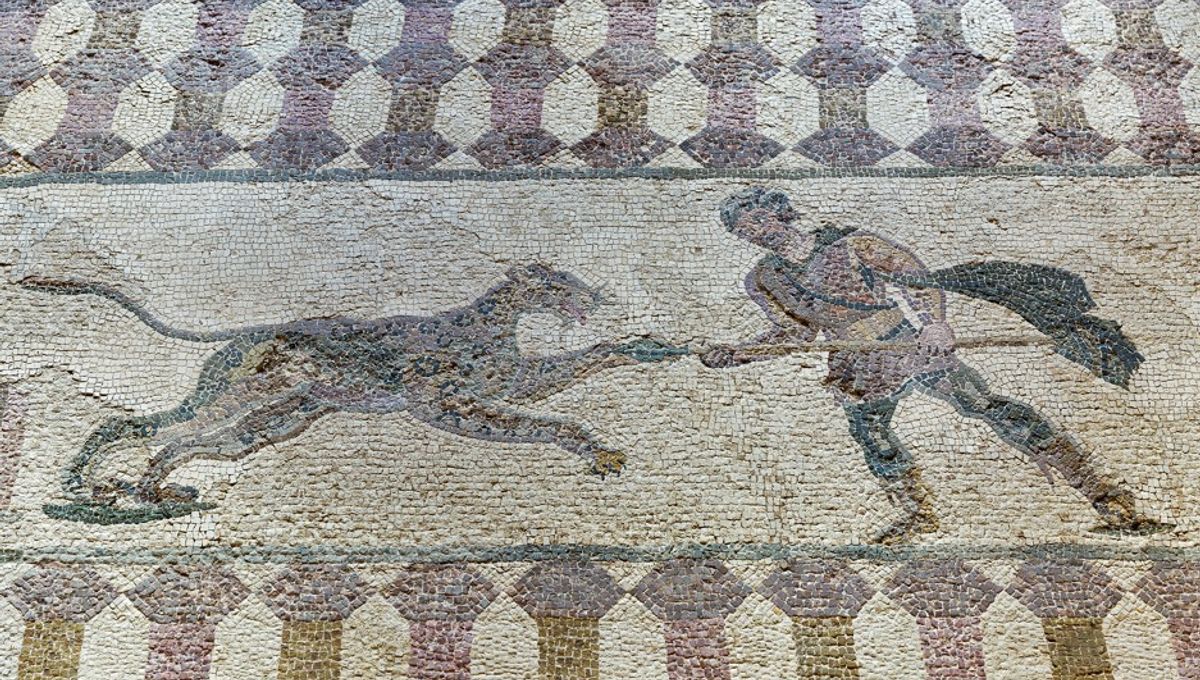
The use of wild beasts in gladiatorial contests is well-documented in ancient Roman texts, yet until now it was thought that these animal adversaries were only deployed in the Colosseum in Rome. However, the discovery of a leopard bone at a Roman arena in Serbia rewrites this script, indicating that fierce felines were transported throughout the empire and took part in brutal spectacles in the provinces, too.
The rest of this article is behind a paywall. Please sign in or subscribe to access the full content.
References to these horrific bouts date back to 186 BCE, when the Roman general Marcus Fluvius Nobilior organized the first inter-species fight at the Circus Maximus. The popularity of these gore-fests grew over time, with an event arranged by Pompey the Great in 55 BCE reported to have involved 410 big cats, including leopards.
And while the remains of numerous lions, tigers, and leopards (but not sharks) have been found at the Colosseum, such creatures had until now remained absent at all sites beyond the epicenter of the Roman Empire. It was therefore assumed that provincial gladiatorial shows probably involved only local animals such as brown bears or wild boar.
The authors of a new study, however, report the discovery of a male leopard’s front limb at the amphitheatre of Viminacium in present-day Serbia. Genetic analysis indicates that the animal hails from Africa – as opposed to Asia, where some leopards are known to have been procured by the Romans – while isotopic data suggests that the feline consumed a wild diet before being captured.
“The Viminacium leopard represents the first documented evidence of this species of exotic large cat in the Roman provinces of Europe, suggesting its participation in provincial venationes [gladiatorial battles],” write the researchers. Dated to between 240 and 350 CE, the remains match up with evidence from other Roman provinces, including a third-century CE gladiator’s skeleton in England that shows signs of having been bitten by a lion.
Exactly how these animals reached the outer fringes of the empire is unclear, but the study authors suggest that they may have been captured by either the Roman military or a North African guild of wild beast hunters known as the Telegini.
After being caught, the leopard is likely to have been transported by sea to a port in either Italy or Greece, from where it may have been carried by road or river to its final destination on the banks of the Danube. The remains of a possible vivarium – or animal enclosure – at Viminacium may represent the leopard’s living quarters following its arrival at the site.
Once at Viminacium, the feline might have been forced to fight against either a gladiator or another animal, although it could also have taken part in a terrifying form of public execution known as damnatio ad bestias. Alternatively, the leopard may have been trained to perform tricks for an audience, although the researchers say this is less likely.
“Bearing in mind the leopard’s predatory nature, and iconographic data from other provinces, there is a strong possibility that the Viminacium spectacle featuring [the] leopard was a bloody one,” they write.
The study is published in the journal Archaeological and Anthropological Sciences.
Source Link: First Ever Leopard Bones Found At Provincial Roman Amphitheatre, Suggesting Bloody Gladiatorial Battles